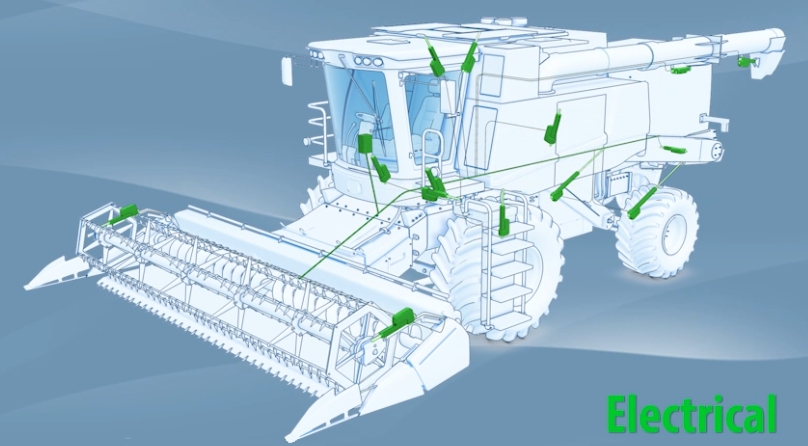Thomson - Electrak HD - Electric Conversions
Accelerated Trend Toward Electric Conversions
Once dominated by manual, pneumatic and hydraulic systems, mobile on- and off highway equipment is increasingly equipped with electric actuators to automate many tasks. Electric linear actuators are easier to integrate with modern computer based control systems and are precisely controlled. They consume a smaller footprint and are cleaner than both pneumatic and hydraulic systems.
Converting to Electric Immediately Eliminates:
- the cost and bulk of pumps, valves and hoses.
- environmentally hazardous oil and leaks.
- costly hydraulic reliability issues and contamination.
- the high-energy consumption of pneumatic and hydraulic systems.
- nuisance start-up failures in cold temperatures.
Easier Installation, Superior Control and Less Complexity
- Simpler, Smaller and Faster to Install
- Electric actuation requires fewer components than hydraulic or pneumatic systems for faster and easier installation
- Component costs are less than in comparable hydraulic or pneumatic systems
- A smaller footprint simplifies and speeds design
Easier Control, Better Accuracy
- All-electric components mean easier integration, fewer control components and less complexity
- Electric actuators react quicker and more predictably, and will not drift when power is off
Lower Energy Costs
- Electric motors are intrinsically more efficient than pneumatic or hydraulic motors
- No need to up-size the existing system to account for potential parasitic power draw
- No power required to hold load-reducing power consumption
Less Maintenance
- No hydraulic pumps, valves or hoses means reduced downtime with fewer parts to service
and replace
- Self-contained units with smart, onboard electronics require zero maintenance, adding design flexibility in component placement
- Electric actuation eliminates the cost and hassle associated with fluid maintenance
Cleaner, Quieter, Healthier Environment
- No pumps, fluids, chemicals or solvents translates into a cleaner and quieter workspace
- A compact design requires fewer materials to be used in production
- Regional manufacturing and distribution plants minimize freight and reduce the carbon footprint

